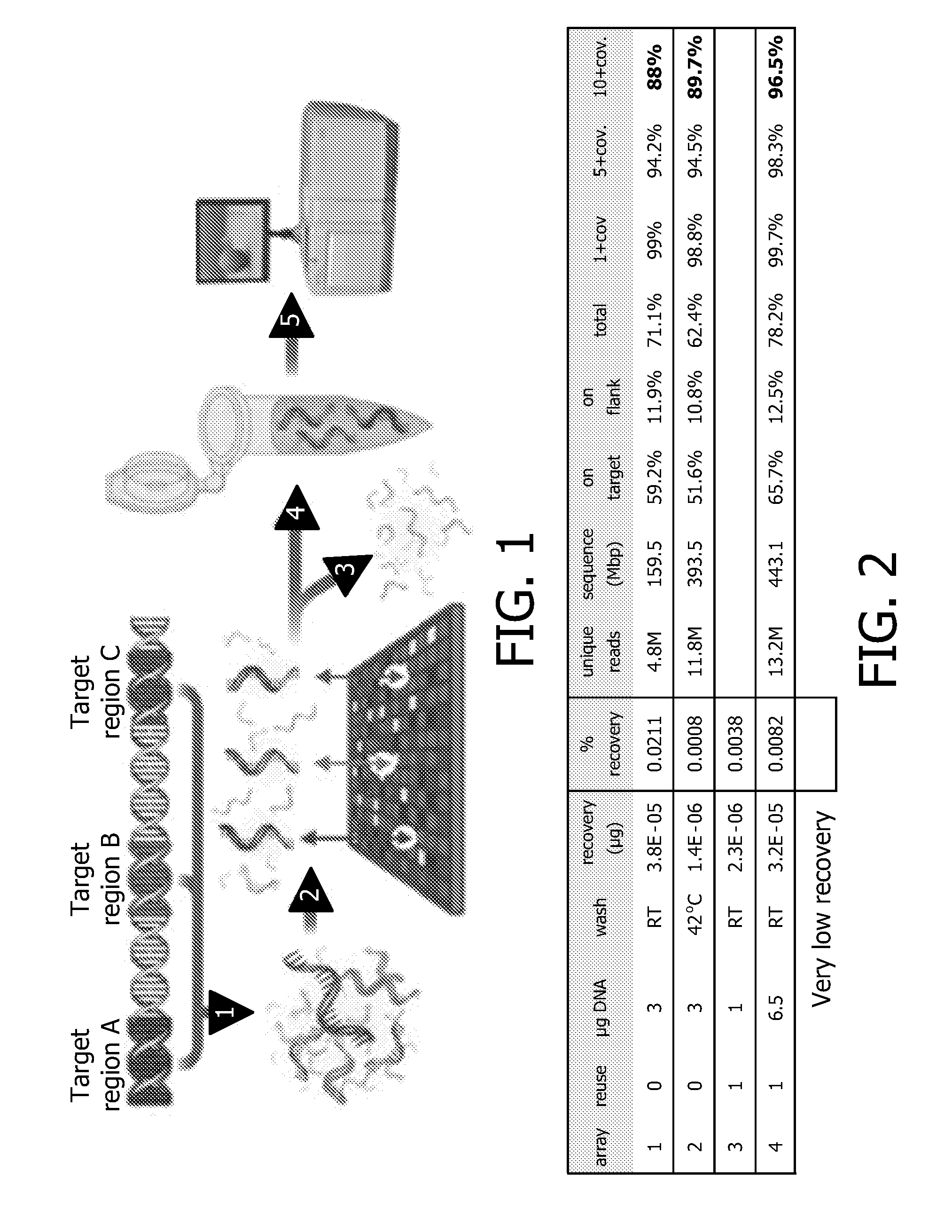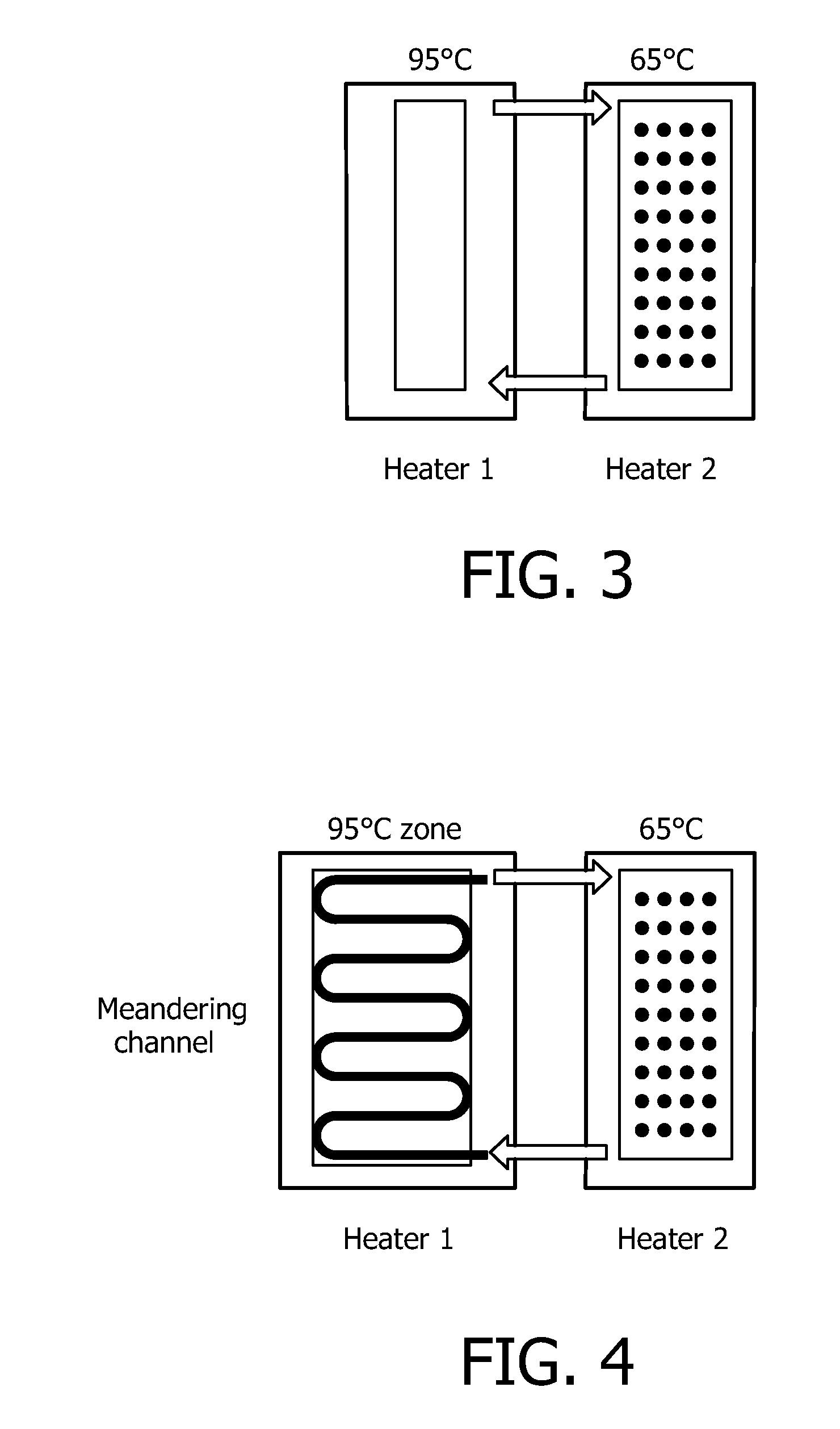Devices and methods for microarray selection
a microarray and device technology, applied in the field of devices and methods for microarray selection, can solve the problems of preventing the reliable discovery of mutations in re-sequencing approaches, preventing the recovery of 80-90% of target regions, etc., and achieving the effect of avoiding long hybridization times and increasing the efficiency of interaction reactions
- Summary
- Abstract
- Description
- Claims
- Application Information
AI Technical Summary
Benefits of technology
Problems solved by technology
Method used
Image
Examples
example 2
[0133]Hybridization tests were performed on amino silane microarray slides (Genorama) with PCR products (114 bp) labeled by Atto 700 under flow conditions (6 μl / min) in microchannels and controlled temperature for 30 minutes in SSC 3× buffer supplemented with 0.1% SDS.
[0134]After hybridization microchannels were washed for 5 minutes in SSC buffer with 0.2% SDS to reduce non specific binding.
[0135]The fluorescence intensity on capture spots and reference spots was measured by confocal scanner; the signal from capture spots was background subtracted and normalized to the intensity of the reference spots.
[0136]FIG. 13 represents the gain in hybridization efficiency obtained by integrated denaturation under flow conditions in the hybridization channels:
[0137](A) in this experimental setup the sample flows in a 100 μm channel from the inlet to the first hybridization step, maintained at 50° C.; after flowing throw the denaturation zone at 90° C., the sample is introduced in the second hy...
PUM
| Property | Measurement | Unit |
|---|---|---|
| angle | aaaaa | aaaaa |
| width | aaaaa | aaaaa |
| width | aaaaa | aaaaa |
Abstract
Description
Claims
Application Information
 Login to View More
Login to View More - R&D
- Intellectual Property
- Life Sciences
- Materials
- Tech Scout
- Unparalleled Data Quality
- Higher Quality Content
- 60% Fewer Hallucinations
Browse by: Latest US Patents, China's latest patents, Technical Efficacy Thesaurus, Application Domain, Technology Topic, Popular Technical Reports.
© 2025 PatSnap. All rights reserved.Legal|Privacy policy|Modern Slavery Act Transparency Statement|Sitemap|About US| Contact US: help@patsnap.com



